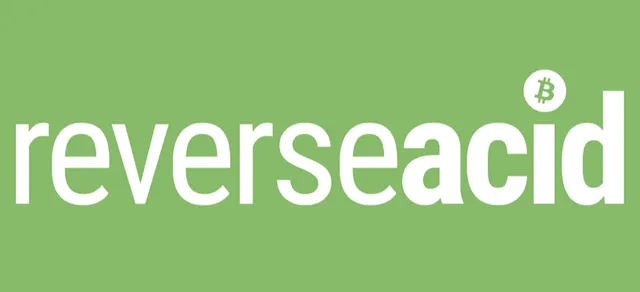In continuation to the ongoing Crypto Analysis Series, here is our write up and personal opinion on the NEM Blockchain. Links to all previous posts can be found below.
“NEM is the Smart Asset blockchain. It’s more than a cryptocurrency, it’s a platform for managing data. It’s the easiest and most cost-effective way to bring blockchain technology to your business.”
nem.io

Brief Overview
Launched in March 2015, the New Economy Movement (NEM) was created by user UthopianFuture on the bitcointalk forum who based it on the cryptocurrency NXT. It didn’t take long for like-minded persons to join the stride. The long-standing goal of NEM, keeping aside all differences in opinion, was to create a protocol from starch based on the values of the community, focusing itself on the real and virtual assets. The protocol also created its own cryptocurrency with the ticker symbol XEM, pre-mining all the coins to be in circulation.
Technical details:
Ticker Symbol: XEM
Max Market Supply: 8,999,999,999
Current Supply: 8,999,999,999
Blocktime: 1 minute
Block reward: Based on Vested Stake (minimum 3 million of XEM stake)
Inflation rate: Nil
Consensus Algorithm: Proof-of-Importance and Delegated Harvesting
Simple Breakdown
Blockchains are, in a strict business sense, cost-saving data and value infrastructures that allow for open-source participation and immutable affirmation. They allow businesses to build and improve on their existing architecture and reduce costs and efficiency in the long run by simplifying internal and external processes such as accountability, information transfer, etc., and bringing in new features like immutability, peer-to-peer security and transparency.
NEM envisions a blockchain that allows many ledgers of information and value co-existing on the same blockchain. Simply put, it tries to function as a library of ledgers, instead of just one common ledger, based on the needs of the operating body. Any data that has a value linked to it, be it transaction information or asset transfer or notarization or real estate contracts can be stored and propagated on the NEM Blockchain in any manner as customized by the operating authority.
Looking at the Protocol through a Microscope

Other than the generic blockchain capabilities that exist in almost all projects like immutability, transparency, p2p, censorship-resistant and the others, NEM lures its ‘customers’ in by providing a ground zero for operations and applications to be built on top of it. To make sure a clear description is available, we looked at NEM with utmost neutrality and scrutiny.
1. EigenTrust ++
EigenTrust is a reputation management algorithm, derived from other previous algorithms, which proclaims to solve the problem of reputation management algorithm in general. The main problem with general algorithms calculating the reputation of different identities is that they fail to consider the game theoretic incentive structures of any entity willing to spend enough time and resources to increase their reputation score.
For e.g., say Alice wants to increase her reputation score on the network that rewards any person who is an active participant on the network and constantly engages with the users. Assuming Alice is motivated enough, she can conjure online bots and take the help of her friends to show on paper that she has constantly been active on the community by engaging in transfer and data exchange on the network. This type of activity wouldn’t be detected by the algorithm and thus encourage similar behavior. The algorithm is open, anonymous, and non-accountable. Something that has to be discouraged when incentives are on the line.
EigenTrust proclaims to have solved this problem of inauthentic and malicious representation of the reputation score. In P2P simulations, it has been shown that EigenTrust significantly decreases the number of downloading inauthentic files on the network by using the global trust values to bias avoiding downloads from potential malicious peers.
In simple words, EigenTrust compares the history of a single entity with the entire history of the blockchain, while at the same time, minimizing run time so as not to have an effect on latency.

2. Proof-of-Importance
Proof-of-Importance (PoI) and Delegated Harvesting can be considered as NEM’s most standout innovation. PoI, as a reward structure is different from Proof-of-Work and Proof-of-Stake as it removes all the perceived drawbacks that both the algorithms carry, such as mining monopolies and large stake hoarders. PoI algorithm calculates the weight of an address’s contribution to the Network, i.e., the stake, transactional history and amount of time spent on the network. Each transaction (above a minimum size) contributes to the POI score and increases the chances of harvesting a block and collecting rewards. **To relegate the risk of artificially increasing transactions and importance score by going back and forth between the same wallets, only net transfers are taken into account by the algorithm. **
Say ABC is a registered user on the NEM blockchain, has more than 10,000 vested tokens (the amount which has been unspent and unmoved for a few weeks) transacts on the network. The Proof-of Importance algorithm ranks ABC based on his vest and traffic contributed to the network, using it to delegate the process of computing transaction, verifying the block and collecting rewards called Delegated Harvesting. The importance attained by ABC also allows him to push his transactions and messages ahead of accounts that have lower importance scores, meaning that PoI can also be used as a reputation metric.

Each account has a Proof of Importance (POI) score that determines its chances of harvesting a block. With delegated harvesting, ABC is lending his POI score to a remote node, increasing its chances of harvesting a block on its behalf.
PoI along with the help of EigenTrust forms the backbone of the NEM network.
3. Distribution of Pre-mined Token
Most blockchain projects have some or the other incentive structure that distributes tokens as a reward for participating in enhancing the security of the network and propagating growth. The mechanism usually involves some form of token generating by either staking or computing. But with respect to NEM, its token XEM was fully pre-mined when developed. The 8,999,999,999 XEM were distributed between a thousand odd developers and supporters of the protocol and are the only ones that will ever be in supply. This gathered immense criticism as most people pointed out that pre-mining was the sign of a scam.
Also, when looking at the percentage of holding among big players, the richest 500 XEM holders together have 76% of the total token supply, while the top 100 make up 63%, with one account holding as much as a billion XEM. It is definitely controversial as to how the tokens were issued and even more suspicious when you see that most of the high balance account holders have vested their balance to supernodes, effectively removing them from the supply. This is not taken as a good sign in the decentralized space. As any pro-decentralized person understands, the concentration of vested power ultimately and non-linearly leads to centralization.
Known Use Cases

1. Mijin
Mijin is a BaaS (Blockchain as a service) built on the NEM blockchain the leverages the capabilities of NEM to provide commercial services. It is currently being tested by financial institutions in Japan (for now). Mijin shows signs of improving efficiency in transactions among corporation and government bodies. It is a base-layer infrastructure developed to allow interoperability between companies, corporation, consortiums, governments or any group that wishes to share data or value. As advertised on their website, the major feature of Mijin include: Authentication metrics, Permanent/Semi-permanent records, and Assets Ledgering.
2. NameSpaces
Namespaces, a domain naming service inspired from the ICANN (Internet Corporation for Assigned Names and Numbers), is embedded on the NEM blockchain to link digital assets to domains. A person/entity can create multiple subdomain addresses under one domain to separate fake digital assets bearing the same name from the legitimate one. Domains and sub-domains allow and an asset to function just like an e-commerce website on the blockchain. NameSapces gives assets an identity on the Internet, with a voice of their own.
To put it into perspective, say Bob is a real estate builder who just finished constructing his biggest apartment yet. Assuming he is experimental enough and that the apartment he built is fully mechanized with IoT devices and motion sensors, Bob can link the apartment to a domain on the web with NameSpaces. Effectively, the apartment now has its own website on the blockchain, allowing it to show all the details in real time. It is easy to imagine that any person willing to rent one of the flats in the apartment can do so online with the website, and have the keys linked to his mobile immediately. Any discrepancy on the rent an also be handled easily by Bob, and in extreme cases, can have the flat closed until payment is received, and so on.
To easily understand the architecture, here is a link to a very intuitive explanation we found on Medium.com by Lexy Jeong former assistant to Jeff McDonald, the VP of NEM Foundation.
In Conculsion
On Paper, the New Economy Movement is one of the most thought-out protocols out there. Its incentive structure discourages centralization, the reputation metrics provide a fool-proof and manipulation free environment for quantifying identity, and its tase of development attracts scores of developers to start experimenting and building on top of the platform.
But looking at it through the market’s perspective, NEM has seen a considerable amount of backlash. After reaching the all-time high market cap of about $20 billion, NEM has seen a fall of 95% of its market value. Investors seem skeptical of its future, which clearly reflects on the current price. One reason for this could be the ineffectiveness of NEM’s marketing team. When compared to other projects, NEM hasn’t gained much public attraction and institutions aren’t aware of its prospects as well.
It remains to be seen what the future holds for NEM, how the community of developers push it forwards and how well the audience appreciates its contribution. But what’s evident is that NEM has huge potential for adoption once it starts moving forward with convincing institutions to experiment and develop on the platform. Until then, its just another investment vehicle for traders to speculate on.
Any discussion or questions regarding your thoughts on the platform are welcome.
Information Sources
- SB
ReverseAcid Monthly Recap
- ReverseAcid Monthly Recap - November 2018 (Vol 1)
- ReverseAcid Monthly Recap - December 2018 (Vol 2)
- ReverseAcid Monthly Recap - January 2019 (Vol 3)
- ReverseAcid Monthly Recap - March 2019 (Volume 4)
Crypto Analysis Series
- Part 1 - Basic Attention Token and How It's Revolutionizing the Internet
- Part 2 - Golem Network Token as a Potential Giant Killer
- Part 3 - Augur and the Future of Decentralized Predictions Markets
- Part 4 - Dogecoin - Such Meme, Much Value
- Part 5 - Zilliqa
- Part 6 - IOTA
Previous Posts
- Oracles and their Inherent Censorship Problem
- Steem - A Fertile Ground for dApps Growth
- The Advent of Cryptoeconomics - Why Traditional Economics Is In Danger
- Why Do Smart Contracts Need a Blockchain
- Layer 2 Protocols: Functionality as a Mode of Micropayment
- Layer 0 Protocols: The Key to Scaling Crypto for the Masses
- Diving Deeper into Zero-Knowledge Proofs (Part 2)
- Bitcoin’s Innate Problems: Volatility and Mining Centralization
- Legislation and Taxation of Cryptocurrencies - A (Very) Brief Outlook
- CME Futures and Dealing With Volatility
- Two Men on an Island - An Introduction to Zero-Knowledge Proofs and What Follows (Part - 1)
- Why Unveiling Fake Volume is Essential for Market Growth
- Understanding the Difference Between an ‘Open-Community’ and ‘Closed-Network’ Blockchain
- Operational Difficulties in Running a Cryptocurrency Exchange
- Dharma Protocol: Tokenized Debt and Funding Through Decentralized Systems
About Reverse Acid

Be a part of our Discord community to engage in related topic conversation.

Follow our Instagram and Twitter page for timely market updates